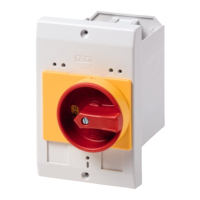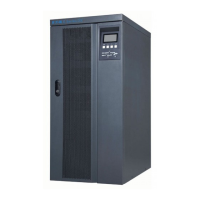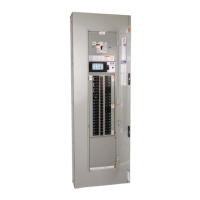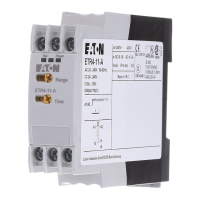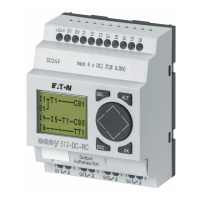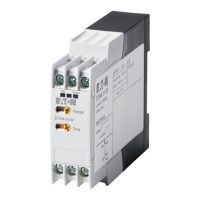these dened criteria) the I[1] instance issues various output signals, especially a trip signal
(»Trip«) and, after some trip delay timer has elapsed, a trip command (»TripCmd«). (Of
course, we assume for now that there is no active blocking, neither for the I[1] instance nor
for its trip command.)
The »I[1] . Trip« signal is always reported to a protection master module, named Prot. This
is very important to keep in mind, because if the Prot module should be blocked – which can
be useful for testing purposes – then absolutely no protection function is able to issue a trip
command, this master protection module will block them all!
Moreover, the »I[1] . TripCmd« signal can become eective only if it has been assigned
to a switchgear device. Usually one of the switchgear devices is a circuit breaker, which
has to be opened. The set of switchgear devices and their designations is dened using
the Page Editor, see ╚═▷ “3.12 Single-Line Diagram”. The properties of the switchgear
device (switching times, latching of the respective output relay, etc.) must be set within the
respective switchgear module, for example within the menu path [Control / Bkr / Bkr[1] /
General Settings].
Then, in the menu path [Control / Bkr / Bkr[1] / Trip Manager], there are many setting
parameters named »Trigger1«, »Trigger2«, …, all with identical functionality: The trip
command from the protection module, must be assigned to one of these, for instance:
»Bkr[1] . Trigger1« = »I[1] . TripCmd«.
When »Bkr[1] . Trigger1« becomes active, the switchgear module Bkr[1] issues its own trip
command »Bkr[1] . TripCmd«.
This trip command must be assigned to a relay output, that actually does the switching
operation. So, let us assume that slot 2 of the protection device is tted with a binary
output module, so that we can use output relay number 1 for this purpose. Then the correct
assignment to be made during commissioning is: [Device Para / Relay Outputs / RO Slot X2 /
RO 1] Assignment 1« = “Bkr[1] . TripCmd”
67www.eaton.comE-Series Family Quick Start Guide
4 Good to Know for Commissioning

